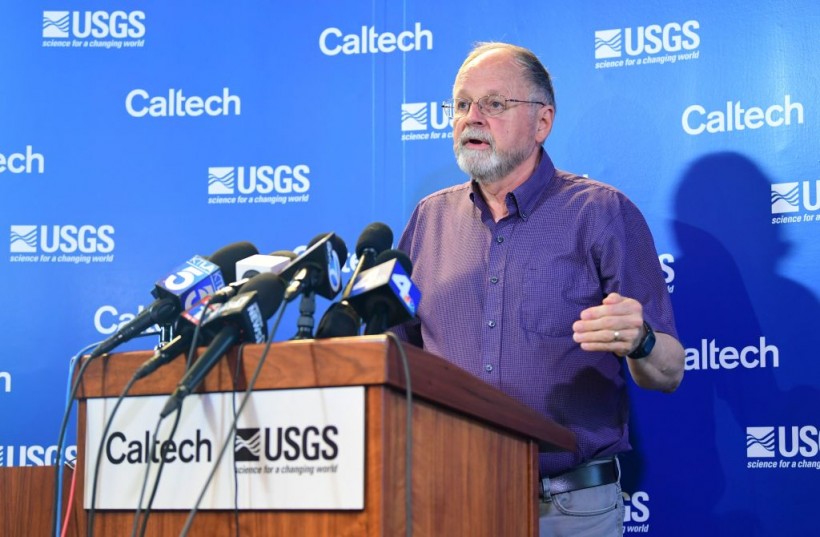There could be a different way on collecting and harvesting solar power in the future as Caltech prepares to launch their project this month.

(Photo : FREDERIC J. BROWN/AFP via Getty Images)
Caltech seismologist Egill Hauksson speaks to reporters at the Caltech Seismology media center on July 6, 2019, in Los Angeles, about the July 5 earthquake which was centered near Ridgecrest, California.
The Space Solar Power Project (SSSP) is almost ready to put its first Space Solar Power Demonstrator into space that will test new technologies, as reported by Interesting Engineering. The technology could be a game-changer of space-based solar power harvesting, which could generate more energy compared to ground-based solar arrays.
How It Will Work
The SSSP will deploy a 50 kg Demonstrator from a Mo spacecraft, which will be carried by SpaceX. It will consist of three main components:
- A deployable on-Orbit ultraLight Composite Experiment (DOLCE)
- The Microwave Array for Power-transfer Low-orbit Experiment (MAPLE)
- A set of 22 varying types of PV cells called ALBA
Testing the Major Challenges of Space-Based Solar Power
The project will allow scientists to test three major challenges to space-based solar power, which are efficiency, deployment, and wireless transmission, back to Earth.
The MAPLE and ALBA experiments will take time to get ready, which means DOLCE will go first within days of getting access from Momentus. This means that the scientists will know immediately if it works.
DOLCE will also test new technologies for the first time in space; therefore, a lot of things could go wrong here. Nonetheless, if things are successful, the payoff would be huge.
Also Read: China's Space-Based Solar Power System Test is a Success! Comparable To NASA's SPS-ALPHA?
What is Space-Based Solar Power?
The idea of space-based solar power is not new. For example, in the 1950s and 1960s, scientists suggested that satellites could use sunlight to generate electricity, which can then be used to power spacecrafts.
However, it never took off because the technology was not yet advanced enough to meet the necessary requirements for space-based solar power.
Nevertheless, the technology has advanced with each passing year, and scientists are now confident that it is possible to use solar power to provide energy to people on Earth and in space.
How Will Space-Based Solar Power Work?
First of all, space-based solar power is a vast project that has several phases in its implementation. The first phase will be done by launching satellites into space, which will be the size of a refrigerator, according to Caltech.
These satellites will harvest solar energy and convert them into microwave beams, which will then be directed to Earth. The energy will then be converted back into electrical power by ground-based antennas.
If the project is successful, it will be a huge leap forward in harnessing sunlight to provide energy to people on Earth. What is more, the project will also have the potential to put an end to the constant and increasing use of fossil fuels.
Related Article: ESA SOLARIS: Space-Based Solar Power to Wirelessly Transmit Energy to Earth










